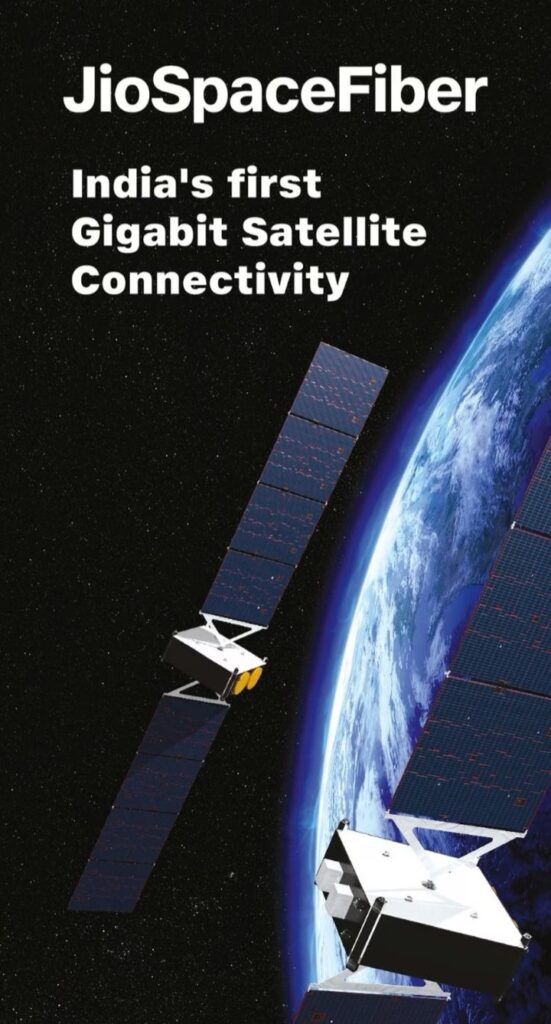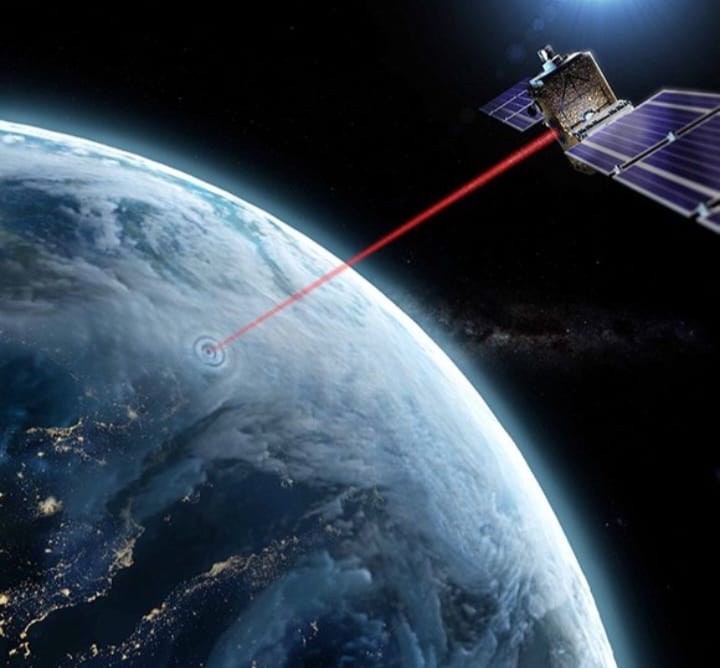Reliance Jio’s Infocomm Limited launched its most awaited service Jio SpaceFiber at the India Mobile Congress in Delhi on 27 October 2023. JioSpaceFiber is a technology that uses satellites for internet connectivity means the internet from satellite. Currently, this service is available in 4 locations in India (1) Gir, Gujarat, (2) Korba Chattisgarh, (3) Nabrangpur Odissa, and (4) ONGC-Jorhat Assam. Now it started working in 115 cities, Soon JioSpaceFiber will cover the entire length and breadth of India. Its main focus will be to provide internet in rural areas of India and this satellite network will also enhance mobile coverage, extending Jio’s True 5G network availability to the remotest parts of the country.
JioSpaceFiber is India’s first gigabit satellite connectivity and will empower everyone, everywhere, to fully engage in the new digital society by providing gigabit access to online government services, education, healthcare, and entertainment offerings.

Reliance Jio’s Infocomm Limited has partnered with SES to reach the latest Medium Earth Orbit (MEO) satellite technology. SES is the only group in the world in MEO that can provide truly unique services such as gigabit internet and fiber-optic connections directly from space.
Jio has access to SES’s combination of O3b and the new O3b mPOWER satellites, making it the only company that provides game-changing technology. This technology delivers scalable and affordable broadband services throughout India.
Read also Chandrayaan 4: Unlocking Lunar Mysteries Beyond Soft Landing
How does JioSpaceFiber internet work?
JioSpaceFiber sends radio waves to a satellite in space, which is then relayed back to users through satellite dishes. These dishes are connected to the user’s modem, which ultimately links their computer to the internet signal. This process is then sent back to the internet service provider, creating a loop that repeats every time data is transmitted.
JioSpaceFiber uses 5 relay systems
(1) Internet-ready devices– Devices may be Mobile phones, Tablets, or any IOT devices.
(2) Modem/Router– A modem or Router is a hardware device that converts data into digital format from analog and vice versa so it is in between internet-ready devices and satellite dishes.
(3) Satellite dish– This dish needs to be precisely aligned to create a signal beam to the satellite in space and accurately retrieve information just like dishes of D2H.
(4) Satellites in Space– JioSpaceFiber uses satellites of SES in Medium Earth Orbit for transmitting the data.

(5) Network Operation Centre (NOC)– The Network Operations Center (NOC) is a centralized place where computer communication and satellite network systems are monitored and managed 24/7.
Read also Vikram-1: India’s first private orbital class rocket
Limitations of Satellite-based Internet
Severe weather conditions like heavy rain, and snowfall may disturb satellite-based internet services but these are temporary and automatically restored.
Reliance Jio Infocomm Limited, a subsidiary of Jio Platforms Limited, has created a global, future-proof network using 4G LTE and 5G technologies. It’s a unique network envisioned from the start as a mobile video network. This network is not only prepared for the future but can also be easily upgraded to support even more data, as technologies are advancing towards 6G and beyond.
Other Satellite-based Internet provider in India
Airtel-backed Oneweb is in a race to launch high-speed internet broadband service from space and hold a GMPCS ( Global Mobile Personal Communications by Satellite Services ) license from the Telecommunication Department Government of India, a license required to start satellite-based internet services in India
Elon Musk’s satellite-based internet provider company is also in a race to get a GMPCS license from the Telecommunication Department of India to start his services in India.
Many companies in the USA and Europe already provide internet services from space like Amazon, ViaSat, and Starlink, and prices from $50 US dollar to $250 US dollars depending upon the data packs, although these types of technology are new in India but India is the largest consumer market in the word.
Read also Kulasekhpatnam: India’s 2nd Satellite Launch Station


